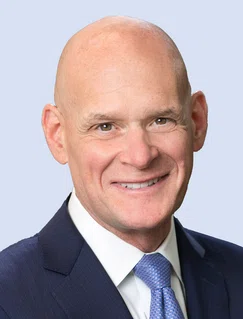Published in London & New York
10 Queen Street Place, London
1345 Avenue of the Americas, New York
Creditflux is an
company
© Creditflux Ltd 2024. All rights reserved. Available by subscription only.


Opinion Direct lending

Strategic planning tends to be static and conducted annually
by Randy Schwimmer

Randy Schwimmer
Vice chairman
Churchill Asset Management
As investors struggle with data overload, they are missing opportunities
Investors are challenged today with so much data and distraction coming at them from every angle. This makes it tough to see the big picture — which in the US actually looks pretty good.
Our experience has been that most predictions of risks have the timing exactly wrong: buy when you should be selling, sell when you should be buying. Those who say credit is risky, for example, because interest rates are high, will miss the best of both worlds. Debt costs will improve for borrowers, but all-in yields for investors will remain well above historic levels.
There’s also the problem of perspective. Headwinds for some are tailwinds for others. This is most obviously true of how rates impact investors and issuers: low rates a challenge for the former, helpful for the latter. And headwinds today —whether rates or the economy — can be tailwinds tomorrow or next year. Finally, headwinds for one asset class — say, bonds in a rising rate cycle — can be tailwinds for another (loans in this case).
Understanding the interplay of these dynamics is instrumental to the popularity of private credit. The uninterrupted growth of the asset class over almost three decades of multiple business and rate cycles, as well as the pandemic, is a testament to its resilience for investors and issuers.
Defaults have not surged in private credit
What are the biggest surprises for investors this year? Our informal polling among top credit managers produced five answers. First, muted M&A activity, despite improved conditions for financing. Second, the strength of the economy. Though rates have been high compared to the zero-gravity era that ended in 2022, consumers keep spending and companies keep hiring. Then there’s the resilience of credit portfolios. Rating agencies and investment banks forecast scary default numbers this year for private credit, higher than bank loans or junk bonds. Those never materialised. Market volatility related to the US election has also yet to emerge, though there is plenty of time yet for post-election blues.
Who, back in the depths of the pandemic, would have foretold the strength of the S&P Index? From a relative low of 2,500 in March 2020, to 5,800 today, a 132% rise, including over 20% last year and year-to-date. Throw in credit spreads at tights and you have a remarkably bullish picture. Proof once again that markets happen when you’re making other plans.
As a new rate cycle triggers a reassessment of which strategies deserve allocations, managers and investors struggle to identify winners and losers. How does the “everything happens so much” environment complicate these decisions? While the pace of Fed cuts may slow, nothing suggests a change in direction. This course suggests a reassessment of which strategies deserve allocations.
In today’s high-velocity environment, many managers find themselves behind the curve. They are unable to capitalise on trends and end up making suboptimal defensive decisions. Capabilities live within a culture. A sense of urgency is needed to react effectively to disruption. With C-suites and employees consumed with day-to-day work, strategic decisions get postponed.
Strategic planning is too slow
Overall, the US finds itself in surprisingly good economic shape. Beyond solid GDP growth, strong corporate earnings and tight credit spreads, throw in (according to The Economist) the rise of median income relative to other countries, the “massive magnet of the American economy” for working immigrants, and tech and energy businesses “doing better than peers around the world”.
But still, one experienced consultant told us that sustaining best practices is problematic. Strategic planning tends to be static and conducted annually. If these plans aren’t linked to risks and how they can be derailed, it’s tough to assess how achievable they are. Organisations are often misaligned. As in the military, the combination of bottom-up empowered execution and top-down planning may be more successful.





